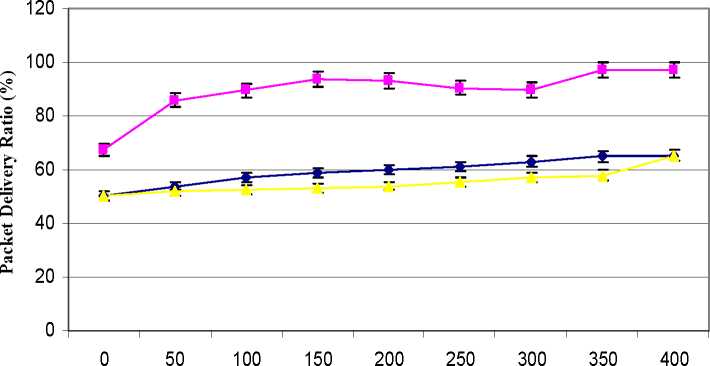5.7.2.2 Packet delivery ratio
The packet delivery ratio is the number of packets that each group member received to
the number of packets sent (should be received). Figure 5.8 shows a comparison of
packet delivery ratio for the proposed protocol (SARM) with two protocols (E2M,
DDM).
Packet Delivery Ratio as a function of Pause Time

SARM
—DDM
—⅛-E2M
Pause Time (s)
Figure 5.8 Packet delivery ratio as a function of pause time
SARM achieved more packet delivery ratio even in high mobility values. This ratio
increases when the pause time increases. The reason for the high ratio in comparison with
E2M is that SARM, when taking mobility into consideration, will deliver more packets
because the probability of failure recovery is better than in E2M. Other reason is that in
E2M it is expected that a huge traffic will be in XF, which may cause packets drop
because of queue overflow in that XF. Moreover, SARM performs better than DDM,
because in DDM there is no efficient solution to the mobility issue, so when the nodes
moves this protocol will suffer from data packet loss.
117
More intriguing information
1. The name is absent2. The purpose of this paper is to report on the 2008 inaugural Equal Opportunities Conference held at the University of East Anglia, Norwich
3. Foreign Direct Investment and the Single Market
4. Short- and long-term experience in pulmonary vein segmental ostial ablation for paroxysmal atrial fibrillation*
5. EFFICIENCY LOSS AND TRADABLE PERMITS
6. Regional differentiation in the Russian federation: A cluster-based typification
7. The name is absent
8. The name is absent
9. The name is absent
10. Passing the burden: corporate tax incidence in open economies